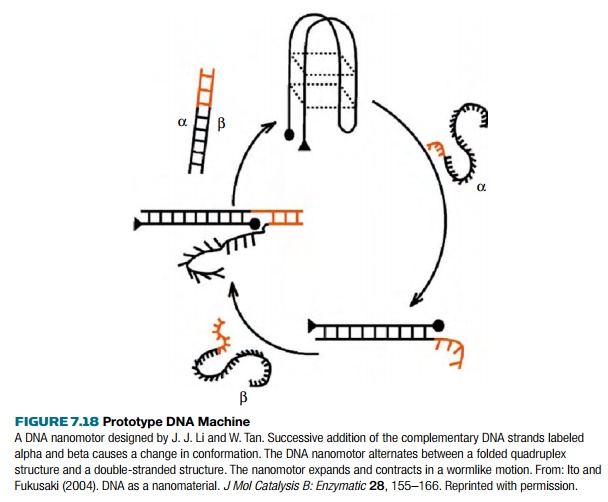Chapter: Biotechnology Applying the Genetic Revolution: Nanobiotechnology
DNA Mechanical Nanodevices
DNA
MECHANICAL NANODEVICES
A rather more futuristic use
for 3-D DNA structures is as frameworks for mechanical nanodevices. The
essential components are some sort of moving parts. Several experimental
prototype “DNA machines” have been designed or constructed that illustrate the
concept. These all involve reversible changes in conformation of a DNA
structure driven by changes in base-pairing. Such changes may be caused either
by changing the physical conditions (heat, salt, etc.) or by adding segments of
single-stranded DNA (ssDNA) that base-pair to some region of the DNA machine,
as illustrated in Fig. 7.18. If ssDNA is used, then another single strand,
complementary to the first, is added to convert the machine back to its
original conformation. The result is a mechanical cycle that could in principle
be used to perform some sort of task. The two ssDNA molecules may be regarded
as “fuel,” and the final waste product is a double-stranded DNA consisting of
the two paired ssDNA fuel elements. (Note that this scheme does not involve
breaking covalent chemical bonds. It is thus not an enzymatic reaction and is
distinct from the use of DNA as a deoxyribozyme as described)

Related Topics